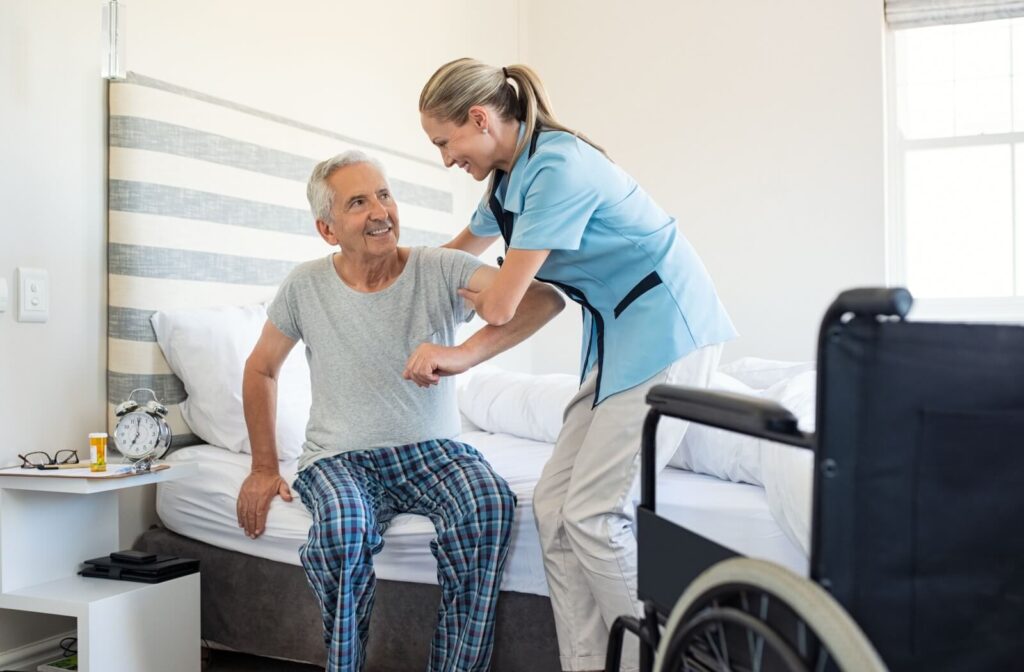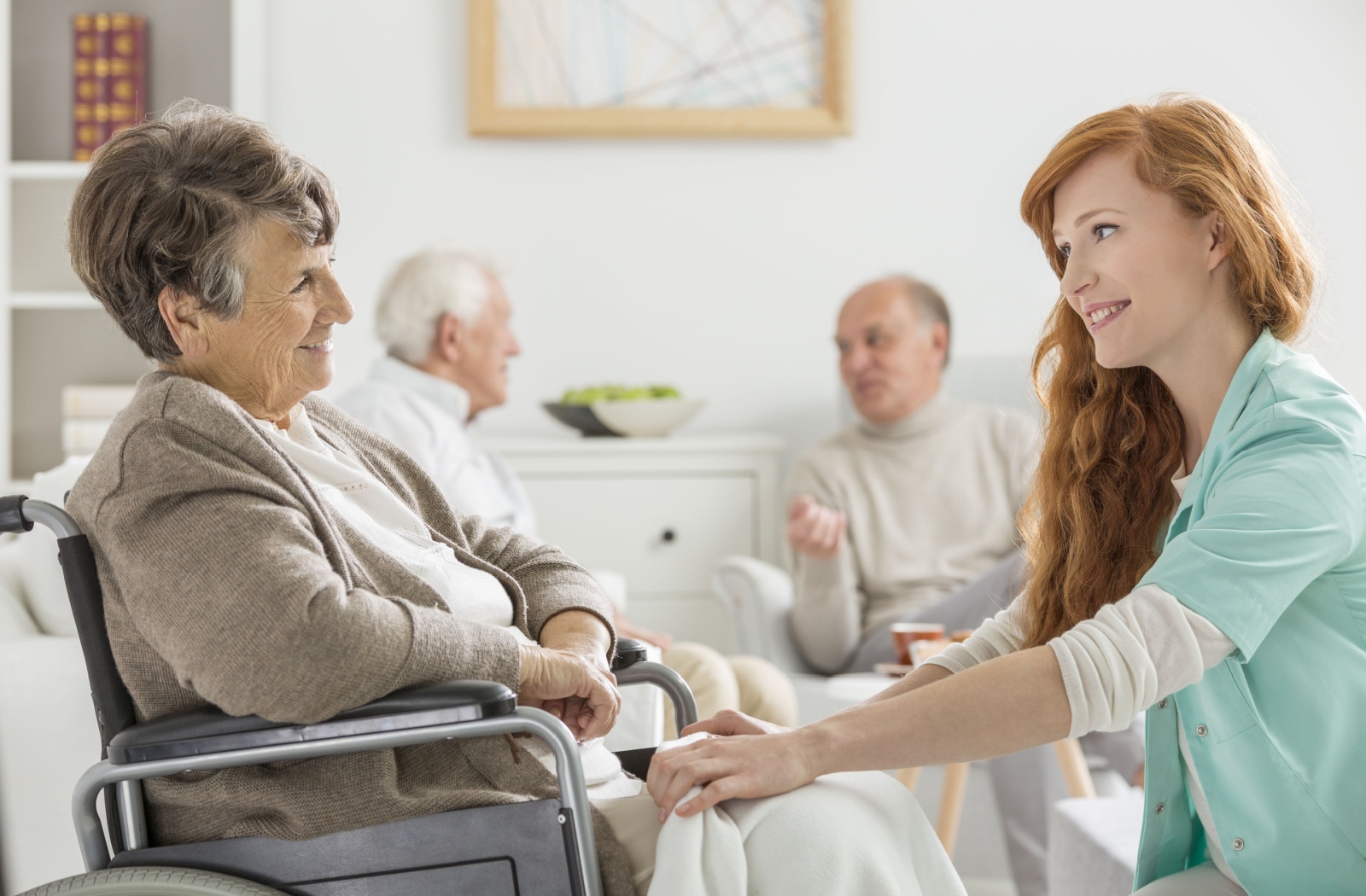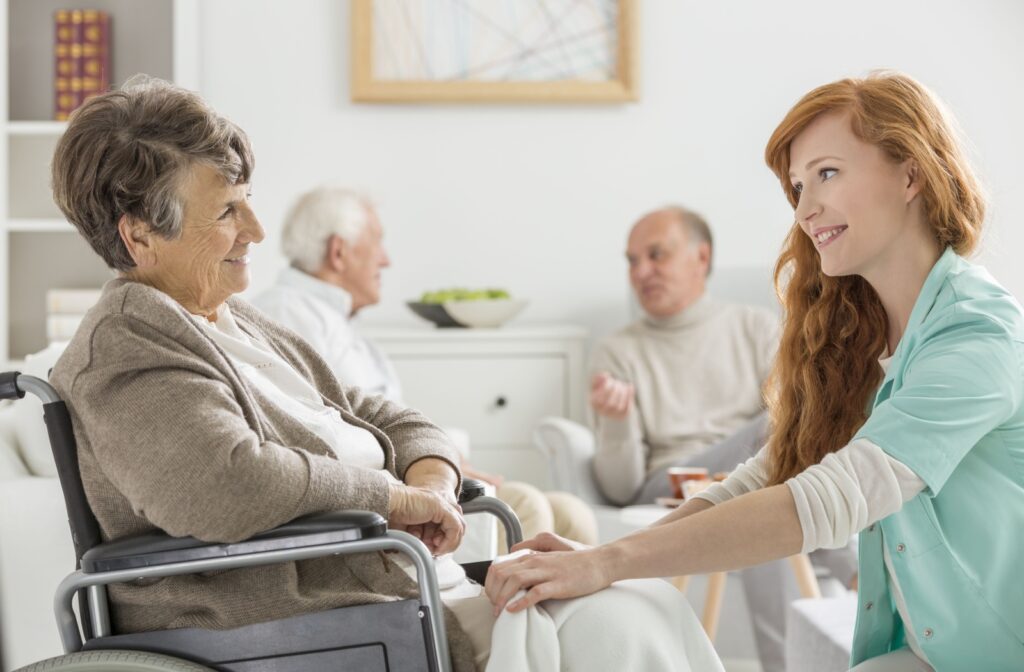When considering long-term care options, it’s natural to weigh the benefits of keeping your loved ones at home versus transitioning them into an assisted living community.
Although home living offers familiarity, assisted living communities provide safety and security measures that are difficult to replicate in a home environment.
Assisted living effectively promotes and maintains a comprehensive approach to residents’ safety and security through:
- Round-the-clock professional care
- Thoughtful design layouts
- Protected environment
- Holistic health and wellness programs
How Assisted Living Promotes Safety
Assisted living is a long-term care community designed especially for older adults who are relatively mobile, self-sufficient, and don’t require intensive medical care.
However, they benefit from an extra hand in managing their activities of daily living (ADLs) with tasks like personal grooming, medication management, meal preparation, and transportation while enjoying a community-oriented space.
Here, they can connect with other residents through activities, social events, clubs, and social outings while supporting their self-fulfillment.
The Drawbacks of At-Home Care
Although caregiving is a rewarding responsibility, it can become more overwhelming, especially as a person’s health continues to change. It’s not uncommon for caregivers to experience burnout, which compromises their well-being and the quality and level of care they can safely provide to a loved one.
Not to mention, maintaining your loved one’s safety at home can quickly become challenging without proper support. Accidents, particularly falls, rank among the most common risks for older adults. Homes are often not equipped with the necessary modifications to prevent injuries.
Assisted living addresses these concerns by offering a thoughtfully designed, secure atmosphere tailored to support residents’ specific needs.
From daily assistance and mobility support to emergency response systems, assisted living reduces safety concerns in older adults while balancing support with residents’ independence wherever possible.
As a result, older adults can focus on thriving within a supportive network. They can gain access to enriching activities, social interactions, and comprehensive care, directly contributing to their overall well-being.
Safety Measures in Assisted Living
Promoting residents’ safety and security is at the forefront of our community through implementing a range of measures. As we equip residents with the knowledge and tools to confidently enjoy their lives, families have peace of mind in knowing the ones they love are in trusted hands.
Round-the-Clock Care
One of assisted living’s most defining benefits is access to professional care at all hours.
Unlike a home setting, where care is often limited to family schedules or paid in-home caregiver shifts, assisted living ensures professional support is close by, through:
- Emergency response systems: Residents often have access to wearable alert devices or call buttons in their rooms, enabling immediate help in emergencies like a fall or sudden illness.
- Trained care staff: Around-the-clock staffing means residents receive assistance with mobility, medications, or other daily needs at any hour, significantly reducing risks. For example, caregivers can help a resident safely get out of bed at night, greatly reducing the chances of a fall.
A constant presence of expert, compassionate care makes a significant difference in preventing small issues from snowballing into serious health concerns.

Thoughtful Design
Assisted living spaces feature intentional designs that minimize risks and enhance residents’ safety.
A typical home may have hazards like steep stairs or slippery surfaces, while assisted living spaces adhere to senior-friendly design principles, such as:
- Slip-resistant flooring and lighting: Well-lit halls and non-slip flooring reduce the risk of trips and falls. Hallways are often wide, with handrails to support mobility aids like wheelchairs or walkers.
- Accessible amenities: Bathrooms often include grab bars, walk-in showers, and seats, confirming daily routines are safe and comfortable.
- Single-level living: Many communities eliminate stairs entirely, removing the potential for fall-related injuries.
These designs foster independence by encouraging residents to move through their environment confidently and without constant supervision.
Protected Environment
Safety extends beyond an assisted living community’s physical layout. Measures are in place to protect residents on multiple levels, from security to infection control.
- Secure entrances and exits: Assisted living communities often employ keycard access and staff-monitored doors to confirm that only authorized people can enter and residents don’t accidentally leave.
- Regular cleaning protocols: Hygiene is a critical priority. Communities invest in enhanced cleaning practices, focusing on high-touch areas to reduce the spread of illness and support residents’ physical health.
- Drug management programs: Safe medication handling is another crucial advantage. Assisted living teams handle the administration and tracking of medications, reducing the risk of missed doses or dangerous errors.
- Fire safety measures: Communities are equipped with smoke detectors, sprinklers, and regular evacuation drills to reduce the risk of accidents and allow for quick, effective responses during emergencies.
This protective environment eliminates uncertainties and reduces residents’ stress, creating an atmosphere where they can enjoy daily life without worry.
Health & Wellness Programs
Assisted living offers holistic health and wellness programs. These services help elevate residents’ quality of life while contributing to their safety and long-term health.
- Routine physical activity: Movement is medicine, and one of the most effective ways to reduce the risk of falls is by strengthening muscles and practicing balance-focused activities. Our group wellness classes encourage residents to explore new workouts while promoting social connection.
- On-site medical staff: Some assisted living communities have nurses or other medical professionals on-site to monitor chronic conditions, perform health checks, or provide urgent care if needed.
- Mental health and wellness Support: Safety isn’t just physical, it’s emotional too. Many communities offer mental health resources, social programs, or therapy services to support residents’ overall well-being.
Safety as the Cornerstone of Assisted Living
When an older adult feels safe in their living space, it transforms their quality of life. Connect with our team at Sterling Pointe Senior Living to schedule a tour of our vibrant assisted living community!



